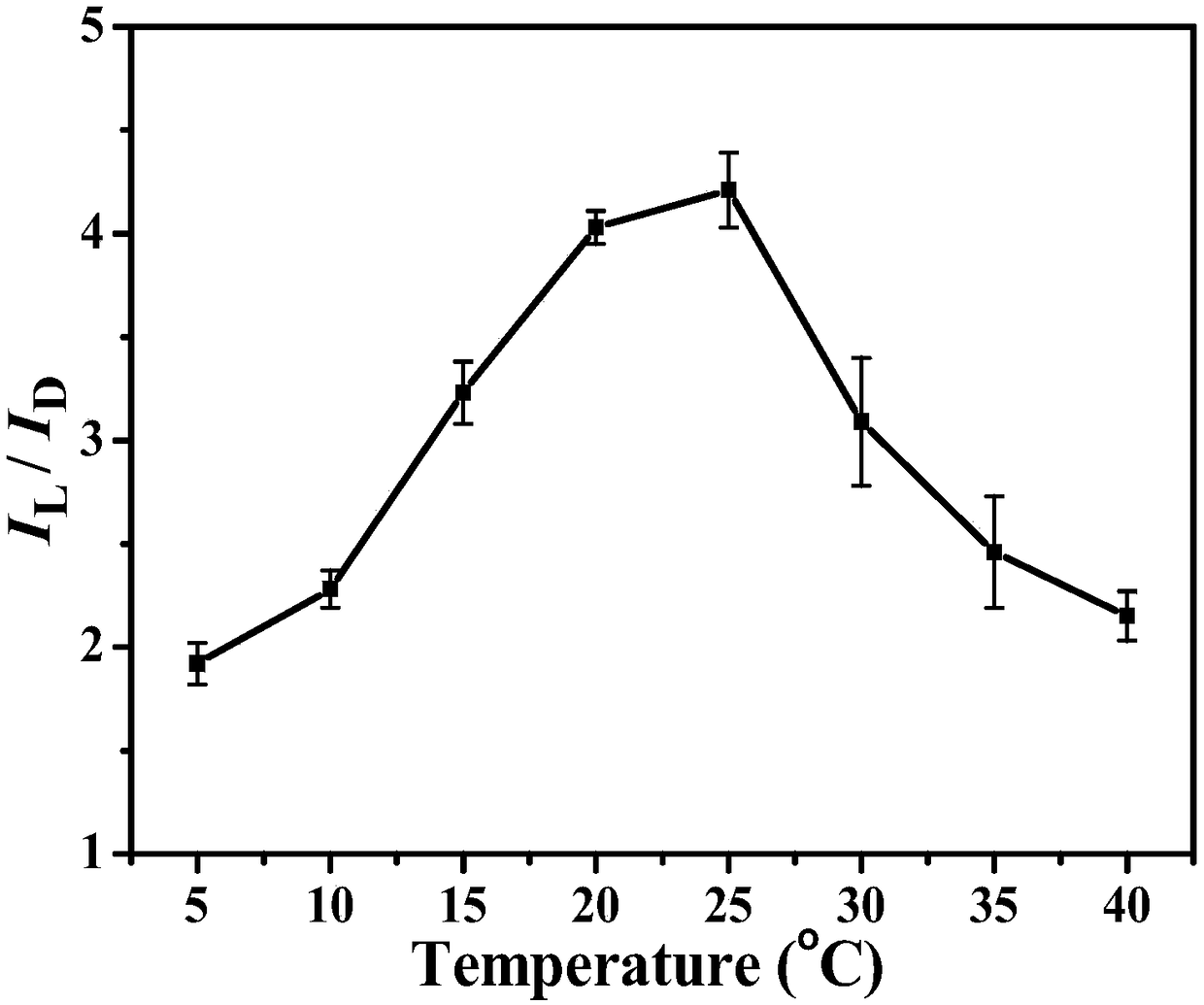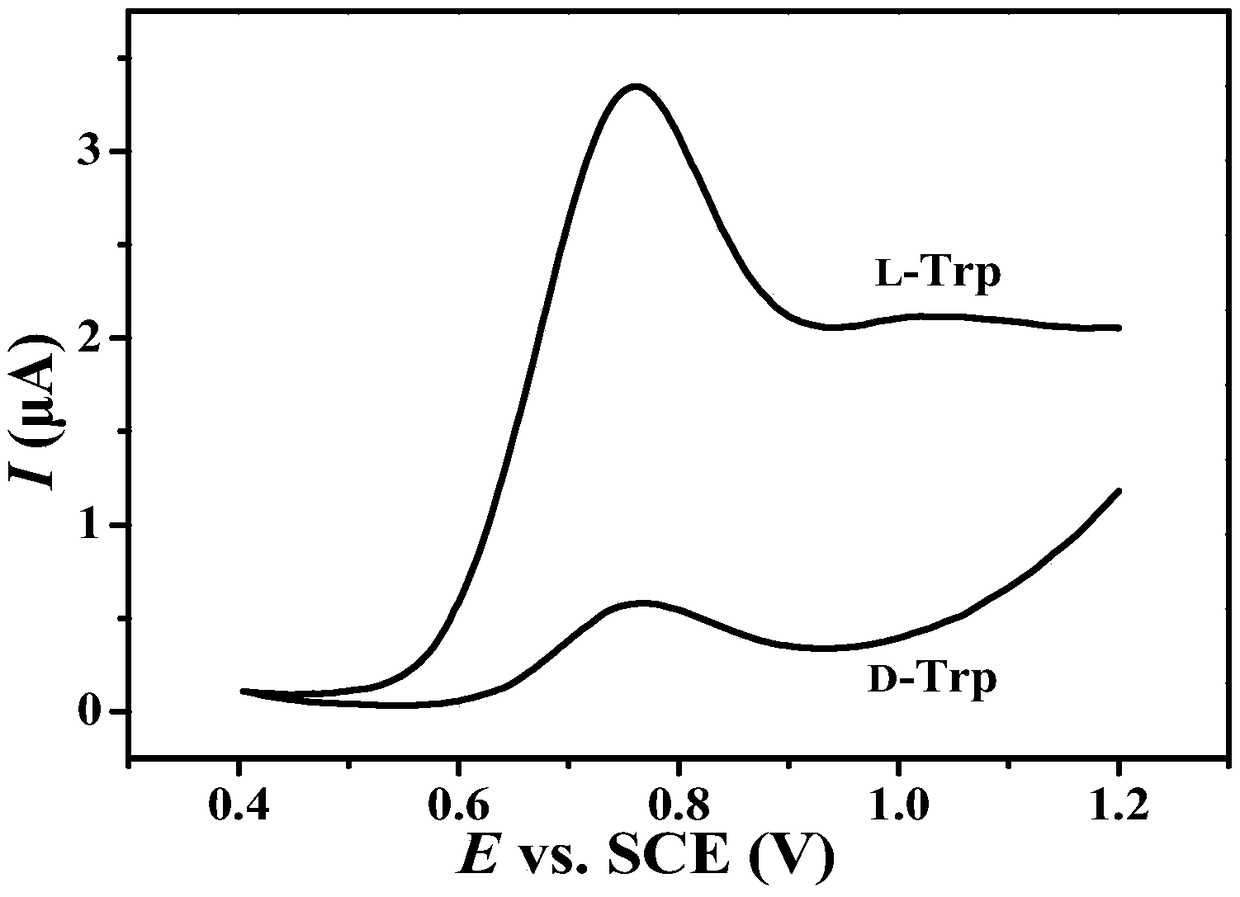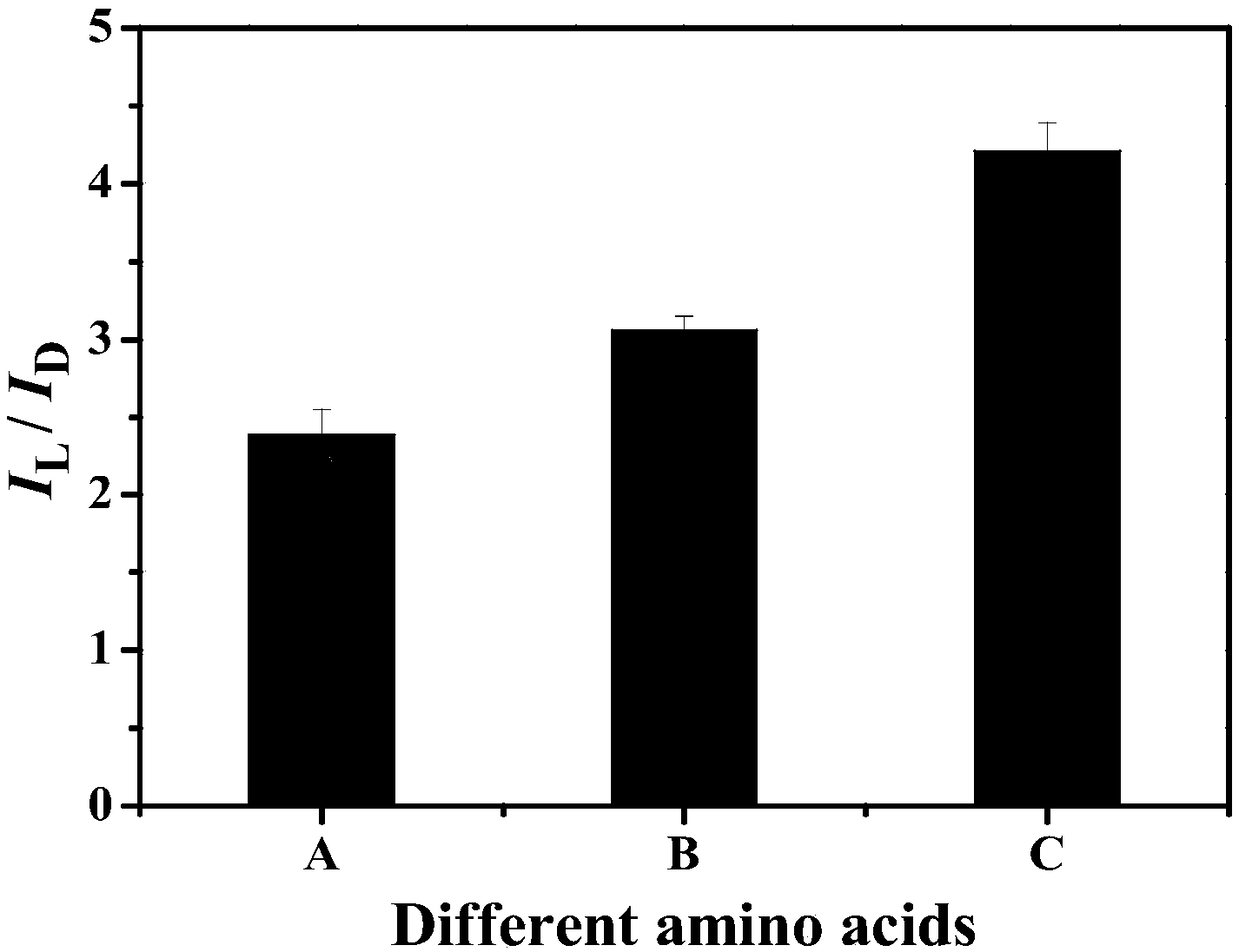Method used for identifying amino acid enantiomers through cyclodextrin nanoparticle electrochemistry
A nano-microsphere, electrochemical technology, applied in the field of molecular recognition, can solve the problems of limited popularization, strict condition control, result stability and reproducibility dependence, etc., and achieve good electrochemical recognition effect and high stability effect
- Summary
- Abstract
- Description
- Claims
- Application Information
AI Technical Summary
Problems solved by technology
Method used
Image
Examples
Embodiment 1
[0016] (1) Weigh 10 mg nanosphere NCC-CDP, dissolve it in 5 mL ultrapure water, and ultrasonically disperse it for 30 min;
[0017] (2) Pipette 5 μL of dispersion liquid evenly drop-coated on the surface of 3mm glassy carbon electrode, and let it dry naturally to prepare NCC-CDP modified electrode;
[0018] (3) Prepare 100 mL of L-Trp and D-Trp solutions with a concentration of 0.5 mM respectively, the solvent is 0.1 M PBS, pH=7;
[0019] (4) First, immerse the modified electrode in the L-Trp solution for differential pulse voltammetry scanning (electrochemical window 0.4-1.2V), and then use cyclic voltammetry (sweep rate 0.1V / s, cycle number 20) to scan to Restore the activity of the modified electrode, and finally immerse the modified electrode in the D-Trp solution for differential pulse voltammetry scanning, record the potential-current response signal of the modified electrode, and perform electrochemical experiments on the tryptophan enantiomers between 5 and 40°C. To i...
Embodiment 2
[0021] (1) Weigh 10 mg nanosphere NCC-CDP, dissolve it in 5 mL ultrapure water, and ultrasonically disperse it for 30 min;
[0022] (2) Use a pipette gun to pipette 5 μL of the dispersion evenly onto the surface of a 3 mm glassy carbon electrode, and let it dry naturally to obtain Cu-containing 2+ Nano-microsphere modified electrode;
[0023] (3) Prepare 100mL of L-Trp and D-Trp solutions with a concentration of 0.5mM respectively, the solvent is 0.1M PBS, pH=7, add 1.35g of CuCl 2 , introducing Cu 2+ ;
[0024] (4) At a temperature of 25°C, first immerse the modified electrode in the L-Trp solution for differential pulse voltammetry scanning (electrochemical window 0.4-1.2V), and then use cyclic voltammetry (scan rate 0.1V / s, Segments 40) scan to restore the activity of the modified electrode, and finally immerse the modified electrode in the D-Trp solution for differential pulse voltammetry scanning, record the potential-current response signal of the modified electrode, ...
Embodiment 3
[0026] (1) Weigh 10 mg nanosphere NCC-CDP, dissolve it in 5 mL ultrapure water, and ultrasonically disperse it for 30 min;
[0027] (2) Use a pipette gun to pipette 5 μL of the dispersion evenly onto the surface of a 3 mm glassy carbon electrode, and let it dry naturally to obtain an NCC-CDP modified electrode;
[0028] (3) Prepare 100 mL of tyrosine Tyr (or phenylalanine Phe) enantiomer solutions with a concentration of 0.5 mM respectively, the solvent is 0.1 M PBS, pH=7;
[0029] (4) At a temperature of 25°C, first immerse the modified electrode in L-Tyr (or L-Phe) solution for differential pulse voltammetry scanning (electrochemical window 0.4-1.2V), and then use cyclic voltammetry (scanning Speed 0.1V / s, number of segments 40) to restore the activity of the modified electrode, and finally immerse the modified electrode in D-Tyr (or D-Phe) solution for differential pulse voltammetry scanning, record the potential-current response signal of the modified electrode, and carr...
PUM
 Login to View More
Login to View More Abstract
Description
Claims
Application Information
 Login to View More
Login to View More - R&D
- Intellectual Property
- Life Sciences
- Materials
- Tech Scout
- Unparalleled Data Quality
- Higher Quality Content
- 60% Fewer Hallucinations
Browse by: Latest US Patents, China's latest patents, Technical Efficacy Thesaurus, Application Domain, Technology Topic, Popular Technical Reports.
© 2025 PatSnap. All rights reserved.Legal|Privacy policy|Modern Slavery Act Transparency Statement|Sitemap|About US| Contact US: help@patsnap.com



